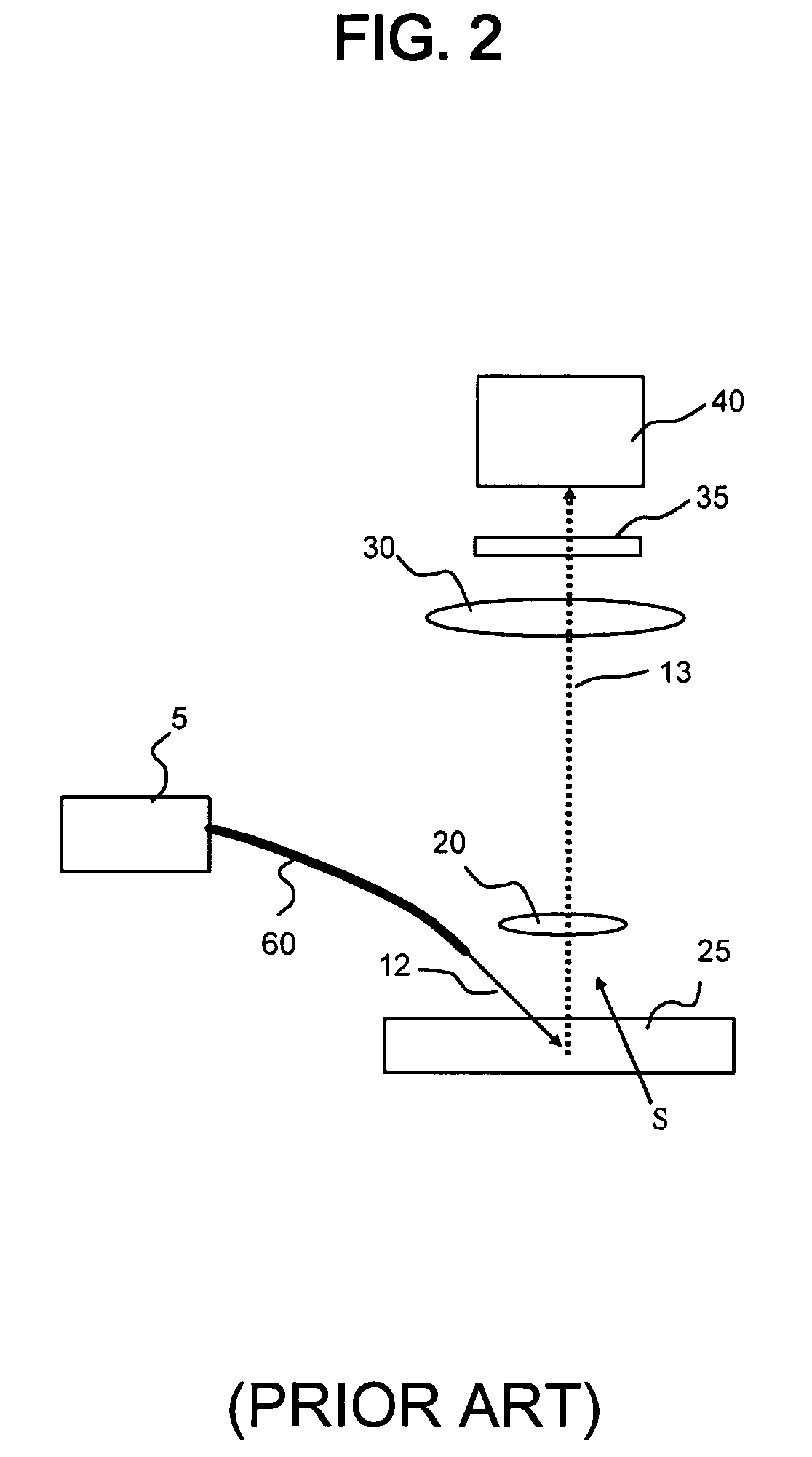Fluorescence microscope and observation method using the same
a fluorescence microscope and microscope technology, applied in the field of fluorescence microscope and method of observing samples using the microscope, can solve the problems of reducing the contrast of a formed fluorescence image, difficulty in precise registration of weak fluorescence, and difficulty in using an objective lens b>20/b> having a high numerical aperture, so as to reduce the required work space, efficient block unnecessary fluorescence, and simplify the effect of the apparatus
- Summary
- Abstract
- Description
- Claims
- Application Information
AI Technical Summary
Benefits of technology
Problems solved by technology
Method used
Image
Examples
Embodiment Construction
[0047]Hereinafter, embodiments of the present invention will be described in detail with reference to the attached drawings.
[0048]Reference now should be made to the drawings, in which the same reference numerals are used throughout the different drawings to designate the same or similar components.
[0049]FIG. 7 illustrates the detailed construction of a fluorescence microscope according to an embodiment of the present invention. As shown in FIG. 7, micro-objects (organic molecules, fibroid materials, deoxyribonucleic acid (DNA), chromosomes, cells, etc.), which are to be observed and include fluorophores, are included in a first medium 301 having a refractive index of n1. A second medium 302 having a refractive index of n2 is placed to be adjacent to one surface of the first medium 301 and to support the bottom of the first medium. The refractive index n2 of the second medium 302 can be adjusted to be equal to or similar to the refractive index n1 of the first medium 301, but it is ...
PUM
| Property | Measurement | Unit |
|---|---|---|
| penetration depth | aaaaa | aaaaa |
| power | aaaaa | aaaaa |
| power | aaaaa | aaaaa |
Abstract
Description
Claims
Application Information
 Login to View More
Login to View More - R&D
- Intellectual Property
- Life Sciences
- Materials
- Tech Scout
- Unparalleled Data Quality
- Higher Quality Content
- 60% Fewer Hallucinations
Browse by: Latest US Patents, China's latest patents, Technical Efficacy Thesaurus, Application Domain, Technology Topic, Popular Technical Reports.
© 2025 PatSnap. All rights reserved.Legal|Privacy policy|Modern Slavery Act Transparency Statement|Sitemap|About US| Contact US: help@patsnap.com



